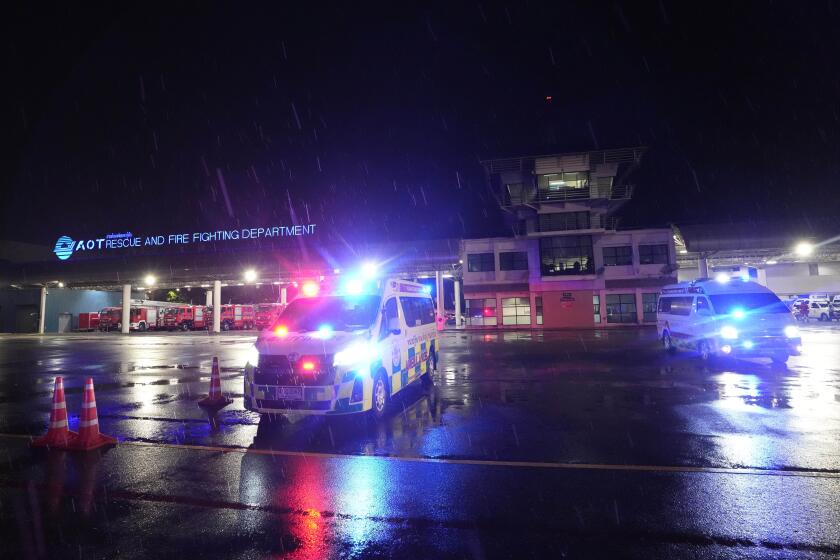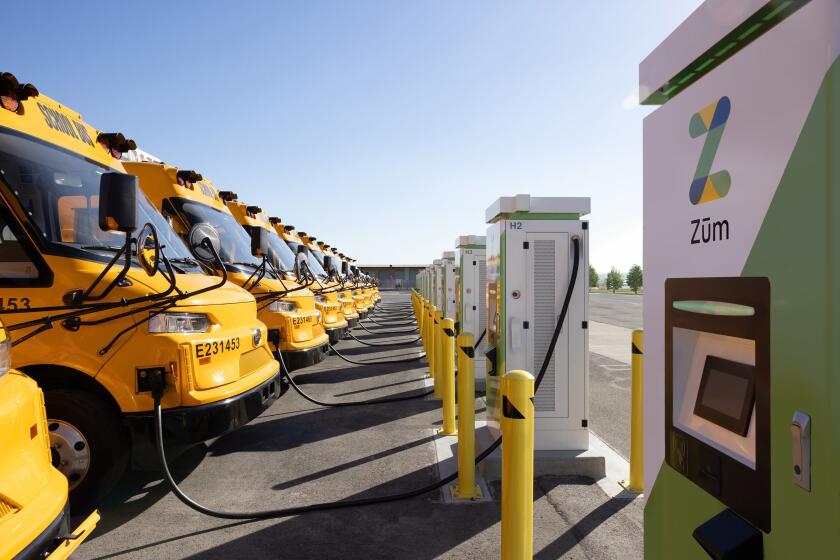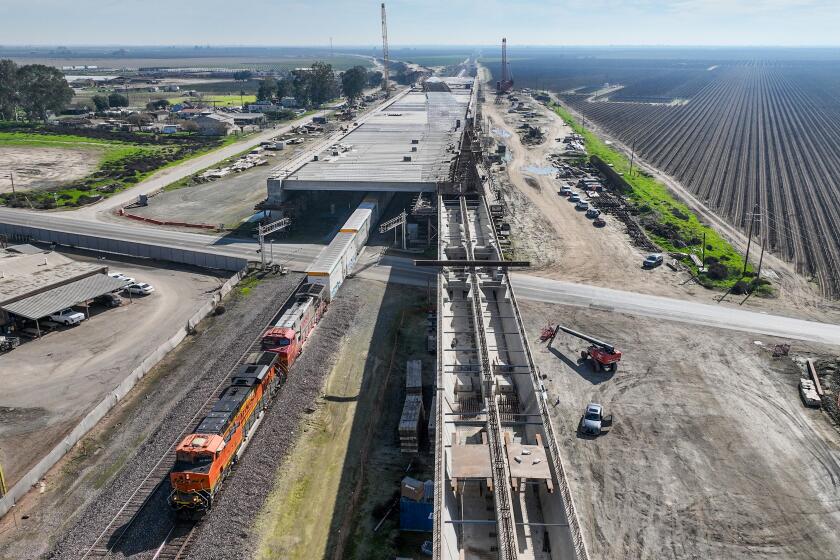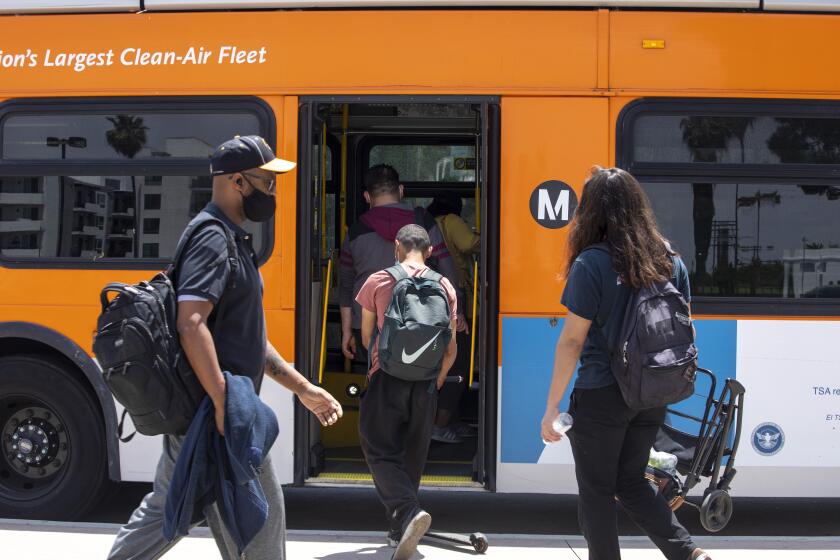Gas Prices Have Drivers Seeking Alternatives
For some time, Teresa Ochoa’s daily commute had been gnawing on her nerves. Not only did her 2 1/2-hour round-trip drive from Pasadena to her Woodland Hills job leave her frazzled every day, but also she felt the pinch in her pocketbook from all the wear and tear on her car.
The final straw was gasoline prices that rose 15% in the last month.
The credit manager went on the Internet, found information on ride-sharing and figured out that she could save more than $300 a year by riding buses and trains.
“It’s been a month, and I couldn’t be happier,” said Ochoa, who now drives to Glendale, where she catches a Metrolink train to Chatsworth and then hops a Metropolitan Transportation Authority bus that drops her off across the street from her job. “It beats trying to drive every day.” Though the whole trip takes about half an hour longer, Ochoa said she is more relaxed because she gets to read or chat with other commuters.
Shocked by the soaring price of gasoline, many commuters are increasingly trying to leave their cars behind in favor of lower-cost alternatives.
According to the 2000 census, about 15% of commuters in the Southland carpooled to work every day and about 5% rode public transit.
Month-to-month figures on how many people carpool are not available, and bus and train ridership figures may be skewed because of the lingering effects of the transit strike, according to the MTA.
But ride-share coordinators say they are seeing a surge in interest among drivers because of the high gas prices.
Last month in the Southland, the (800)COMMUTE ride-share information hotline experienced a 66% increase in calls from solo drivers hoping to be matched with a carpool or a vanpool. Normally, about 400 callers a month ask to be matched, the MTA said. Last month, there were 662 inquiries.
Transportation coordinators at large companies say they too have noticed an increase in employees seeking information on carpools, vanpools and public transit.
“More people are signing up for it than in the past. Some of them are longtime employees,” said Denise Crangle, benefits administrator for Panavision, which has 280 employees at its Warner Center corporate headquarters in Woodland Hills. “Cost plays a big role in a person’s decision.”
But even people whose jobs don’t allow them to carpool or ride public transit are modifying their driving behavior to lessen their pain at the gas pump.
Orange County attorney Marc Levine now leaves his gas-guzzling Chevy Suburban at his Balboa Island home. Never mind that he bought the still-sparkling SUV for its extra-beefy engine only a year ago.
“It gets 10 miles to the gallon! You know how much it costs to fill up a 35-gallon tank?” said Levine, cringing. These days, he cruises to courthouses and business meetings in a little Mitsubishi Lancer Evolution, which -- at 20 miles a gallon -- is much more economical. And, to avoid activating the car’s fuel-gulping turbo-charger, he goes easy on the sporty sedan’s accelerator, he said.
A month ago, regular unleaded gas in California averaged $1.87 a gallon, while premium fuel averaged $2.02, according to the Automobile Club of Southern California.
Two weeks ago, gas prices statewide hit record highs, when regular averaged $2.18 a gallon, the Auto Club said.
On Monday, regular gas averaged $2.16 a gallon, while premium unleaded averaged $2.34.
“The prices suck. They’re insane,” said Leo Ibanez, a computer administrator, blanching at the $2.27-per-gallon unleaded fuel he pumped into his Nissan Sentra at an Encino gas station Monday. He used to buy premium gas, he said, but $2.57 a gallon is just too expensive.
The Woodland Hills resident used to drive alone to work. But last week he and a co-worker began carpooling to save money, he said.
Drivers will likely experience little relief in the near future. The U.S. Department of Energy predicts that motorists will pay record prices for gasoline this spring and summer because of soaring crude oil costs and low fuel inventories.
More to Read
Start your day right
Sign up for Essential California for news, features and recommendations from the L.A. Times and beyond in your inbox six days a week.
You may occasionally receive promotional content from the Los Angeles Times.






